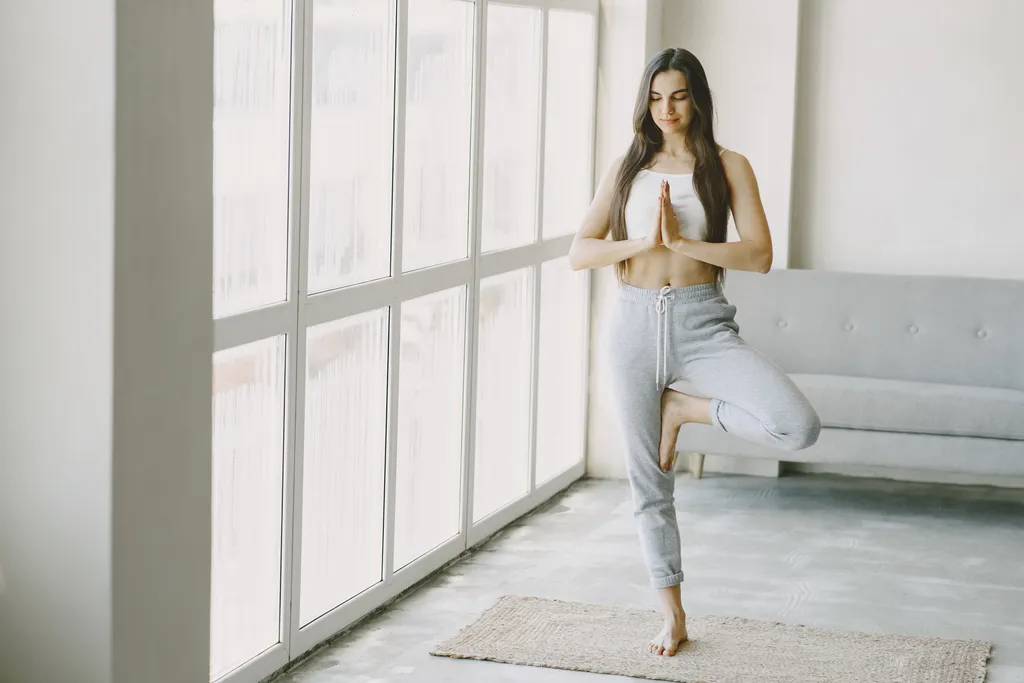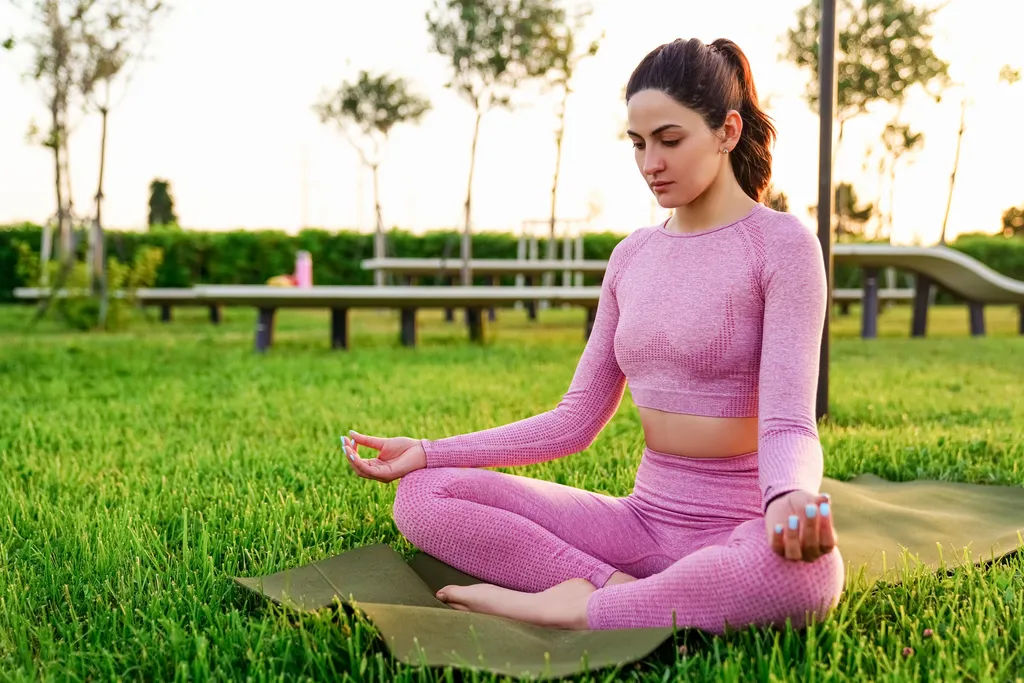Introduction
Are you interested in starting a 18 Yoga practice but find the thought of it to be overwhelming? Don’t worry; you’re not the only one going through this, and we’re here to support you. This blog post is designed to help address all of your questions regarding yoga for beginners, regardless of whether you are just beginning your practice or are seeking methods to deepen your practice.
Read More: 18 Yoga: What It Is and Why It’s So Popular
This book will show you all there is to know about starting on the mat, from choosing the perfect class and learning good form to finding helpful instructors and developing a routine that works with your lifestyle. It’s time to get the lowdown on yoga for newbies, so get yourself a cup of your beverage of choice and settle in!
What is yoga, and why should you try it?
Yoga is an age-old discipline that is believed to have originated in India. Over the years, yoga has acquired popularity all over the world. To improve one’s overall health and sense of well-being, it blends various physical postures, methods of controlled breathing, and meditation. Regular yoga practice can help you improve your strength, flexibility, balance, and attention while reducing stress and anxiety. In addition, it is an excellent method for connecting with both your physical and mental self and other people who are part of the yoga community.

Benefits of yoga for beginners
Beginning a yoga practice, especially as a novice, can positively affect one’s life. The following are some of the most notable examples:
Improved flexibility
Your general flexibility will improve over time due to the stretching and lengthening effects of the yoga positions you practice.
Increased strength
The ability to hold yoga postures for extended periods demands strength, which you will gradually develop as you continue to practice yoga.
Better balance
You will gain greater control of your body and enhance your balance if you consistently try to do so.
Stress relief
Because of the relaxing breathing techniques and contemplative features that are a part of yoga, it is an excellent approach to reduce stress and increase relaxation.
Enhanced focus
Yoga’s emphasis on the mind-body connection can assist in developing greater mental clarity and focus.
Types of yoga practice for beginners
There is a wide variety of yoga to pick, each focusing on a distinct area and having advantages. When starting, it is crucial to begin with a style appropriate to your needs and your current fitness level. The following are some examples of popular choices:

Hatha yoga
A more relaxed style of yoga that emphasizes fundamental postures and breathing practices.
Vinyasa yoga
A more active and fluid style that synchronizes movement with the inhalation and exhalation of air.
Ashtanga yoga
A more strenuous form of the practice that involves holding positions for longer periods.
Restorative yoga
A method for relieving stress involves supporting the body in various postures for extended periods with various props.
Essential yoga equipment for beginners
In contrast to many other forms of physical activity, yoga does not require significant equipment. A comfortable outfit and a sticky mat on which to practice are all that are required of you. You can also adjust postures and make them more accessible for your body by using props like blocks, straps, and blankets in your yoga practice. When you are more advanced in your practice, you may want to purchase extra equipment, such as a meditation cushion or a yoga bolster; however, purchasing such items is not required initially.
Common yoga poses for beginners to get started with
The following are some yoga positions that are accessible even to complete newcomers:
Mountain pose
Maintain a confident stance by standing with your feet about the width of your hips apart, arms by your sides, and palms facing forward.
Downward-facing dog
Starting on your hands and knees, tuck your toes, lift your hips and back, and stand up straight with your legs.
Warrior I
Step your right foot forward between your hands and extend your arms up overhead as you transition from a downward-facing dog to an upward-facing dog.
Child’s pose
First, get down on all fours, then bring your hips to your heels while extending your arms.
Tips on how to practice safely and effectively
Like any other form of physical activity, yoga should be practiced safely and effectively to reduce the risk of injury. The following are some considerations to keep in mind:

Listen to your body
Pay attention to how you feel in each pose, and if something doesn’t seem right, either tweak it or move on to the next one.
Focus on proper alignment.
Maintaining the correct form is necessary to minimize the risk of injury and get the most out of your training. If you need clarification on a position, you should be bold and ask for assistance from a yoga instructor.
Breathe
Yoga emphasizes conscious, in-depth breathing, making it easier to remain in the here and now and maintain concentration.
Be patient
To make development in yoga, you need to practice it regularly and patiently. Try not to judge yourself by the standards of others, and keep in mind that everybody is unique.
Benefits of a regular yoga routine
Your life may reap countless benefits, some of which include the following when you make yoga a regular practice:
Improved physical health
As was noted before, frequent yoga practice can increase a person’s strength, flexibility, and balance.
Better mental well-being
There is evidence that practicing yoga can alleviate stress, anxiety, and despair symptoms.
Increased self-awareness
You can learn to understand better and attend to the requirements of your body by cultivating a mind-body connection via yoga.
Sense of community
Participating in a yoga community or classes can help you connect with people who share your passions and principles.
How to find the best instructor for your goals
Finding the proper yoga instructor for you is essential, as they will serve as a guide and a support system as you progress through your yoga practice. The following is a list of advice that will help you pick the most suitable instructor for your needs:
Do research
Investigate the individual’s background in terms of their training, experience, and how they instruct to determine whether or not they meet your criteria.
Attend different classes
You should experiment with various teaching styles and teachers to find one that speaks to you the most.
Ask for recommendations
Contact family members or friends with a yoga practice and inquire about their suggestions.
Techniques for staying motivated and committed to your practice
It can be difficult to keep a regular yoga practice. However, it’s critical to keep your motivation and commitment levels high to be successful. The following are some strategies that may be of assistance:
Set realistic goals
Determine what it is you hope to accomplish via the practice of yoga, and then aim for goals that are both realistic and attainable.
Create a routine
Put yoga into your schedule daily or weekly so that it becomes second nature to you.
Mix it up
You can keep your practice exciting by experimenting with various styles and poses, so don’t hesitate.
Find a support system.
Participating in a yoga group or class can bring accountability and incentive.
Conclusion
To summarize, yoga is an all-encompassing and holistic activity that can improve one’s health in both the body and the mind. Because it offers a variety of styles and poses, it is appropriate for people of varying skill levels, making it suitable for novices. Even though embarking on a yoga practice may initially appear challenging if one has the right instructors, maintains patience, and practices regularly, the experience can be extremely gratifying and worthwhile. Yoga can help you achieve your goals of improving your health, lowering your stress levels, or simply finding a feeling of community. All of these things can be accomplished through the practice of yoga. Remember that even the most experienced yogis must start somewhere; take the initial step, focus on your breathing, and enjoy the journey.
FAQs about beginner-level yoga classes
Q1: Is yoga suitable for all fitness levels?
Yes, some classes start at the beginner level and are geared toward people of varying fitness levels and capabilities.
Q2: Do I need to be flexible to do yoga?
Contrary to popular belief, flexibility is not required to participate in yoga. You will eventually develop greater flexibility if you consistently put in the effort.
Q3: Can I practice at home, or do I need to attend a class?
You may do yoga at home with internet resources, but attending a class can be advantageous if you want to receive advice and feedback from an instructor. You can do yoga at home with the help of online resources.
Q4: What should I wear to a yoga class?
Put on loose-fitting, soft, breathable clothing that doesn’t restrict your movement. Avoid wearing too baggy or loose-fitting clothes since they can get in the way of certain yoga positions.
Q5: What if I have injuries or limitations?
It’s important to let your teacher know about any injuries or limits you may have so they can change some poses or give you other options. Listen to your body always, and don’t push yourself too far.




